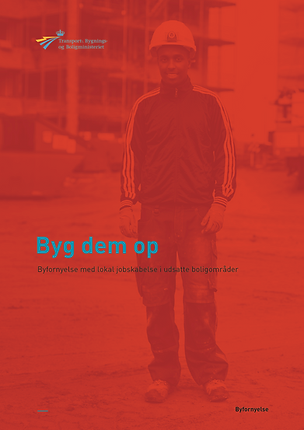
“Build them up - Urban regeneration in disadvantaged neighborhoods with local job creation” is a publication (in Danish) about how to use the construction phases of urban development for social purposes, such as job creation and community building.
Every year, we invest billions in disadvantaged neighborhoods in the hope that better housing and outdoor spaces will improve the areas and their residents.
But studies show that these investments have little effect on the original residents' connection to education, the labor market and crime.
Kenneth Balfelt Team and carlberg/christensen have prepared a report for the Ministry of Immigration, Integration and Housing that shows how urban renewal actors can use investments in physical improvements of vulnerable neighborhoods to employ locals in construction and renovation projects.
With this report, we hope to kick-start a new trend in Danish urban development in general and in vulnerable neighborhoods in particular.
Because it's important to think social change into the development of our residential areas. And there is great potential for community building and job creation if actors working with the renovation of disadvantaged residential areas collaborate across sectors and employ local people in construction and renovation projects.“Build them up - Urban renewal in disadvantaged residential areas with local job creation” is a publication about how to use the construction phases of urban development for social purposes, such as job creation and community building.
Every year, we invest billions in disadvantaged neighborhoods in the hope that better housing and outdoor spaces will improve the areas and their residents.
But studies show that these investments have little effect on the original residents' connection to education, the labor market and crime.
Kenneth Balfelt Team and carlberg/christensen have prepared a report for the Ministry of Immigration, Integration and Housing that shows how urban renewal actors can use investments in physical improvements of vulnerable neighborhoods to employ locals in construction and renovation projects.
With this report, we hope to kick-start a new trend in Danish urban development in general and in vulnerable neighborhoods in particular.
Because it's important to think social change into the development of our residential areas. And there is great potential for community building and job creation if actors working with the renovation of vulnerable residential areas collaborate across sectors and employ local people in construction and renovation projects.
